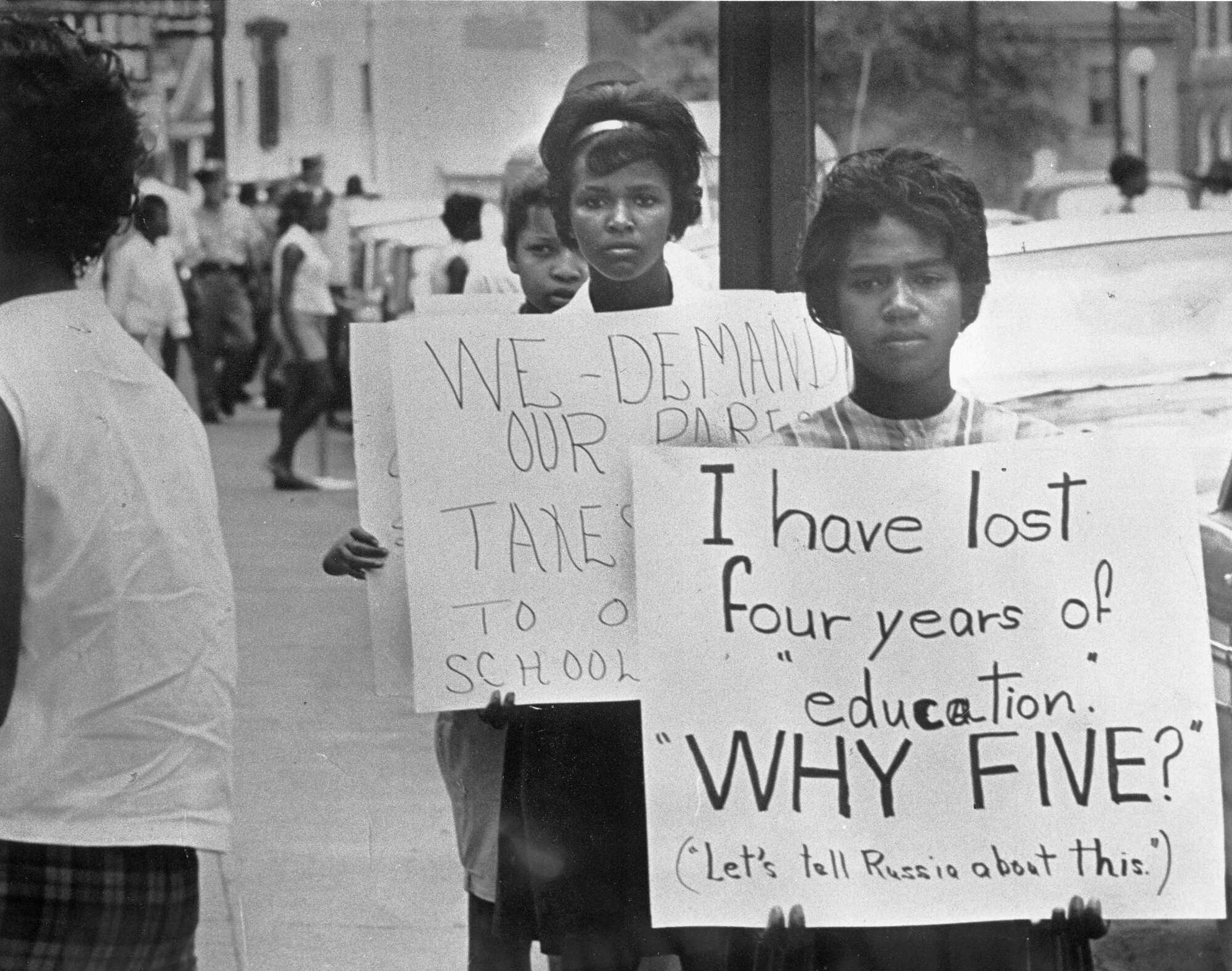Strategies for Equality
Moton High School students named in lawsuit against Prince Edward County School Board, including lead plaintiff Dorothy Davis (center), 1953
In 1951, fed up with poor conditions at the segregated Robert Russa Moton High School in Farmville, Virginia, a group of students led by 16-year-old Barbara Johns went on strike to demand a new school building. NAACP lawyers convinced the students to go to court to fight for desegregated schools rather than a new segregated one. Farmville became one of five legal cases included in the landmark 1954 U.S. Supreme Court ruling, Brown v. Board of Education.
Featured Video
“This Is Your Moment: Seize It”
Former students, including strike leader Barbara Johns (1935–1991), recall their participation in the 1951 strike at Moton High School in Farmville, Virginia.
We wanted so much here and had so little. We had talents and abilities here that weren’t really being realized and I thought that was a tragic shame . . . That is what motivated me to want to see some change take place here.
Barbara Johns
Separate and Unequal
Classroom at Moton High School, 1953
Davis v. County School Board of Prince Edward County, 1952
Student strike sign posted at Moton High School, 1951
Students at Moton High School attended class in temporary structures made of plywood and tarpaper, heated by wood stoves, with no indoor plumbing. With representation from NAACP Legal Defense Fund lawyers Spottswood Robinson and Oliver HIll, 117 students sued the Prince Edward County School Board. Between 1945 and 1954, the NAACP Legal Defense Fund headed by Thurgood Marshall launched a series of test cases to challenge school segregation at the local, state, and federal level.
In reviewing the Farmville case, the U.S. District Court in Virginia agreed that conditions in the segregated schools were “not substantially equal,” but declined to grant the students’ petition for desegregation. This decision paved the way for an appeal to the U.S. Supreme Court.
Integration Won, But Delayed
NAACP lawyers and students, 1953
"No Trespassing," Moton High School, ca. 1962
After Brown v. Board of Education determined that segregated schools were unconstitutional, Prince Edward County opted to shut down its public schools rather than to integrate them. The new Moton High School, constructed in 1953 following the student protest, was closed from 1959 to 1964.
Fight for Basic Education Continues
Students from the Detroit public school system sued the State of Michigan for its failure to provide adequate conditions necessary to obtain a basic minimum education. In a class-action lawsuit filed by seven students in 2016 (Gary B. v. Whitmer), they alleged that appalling and substandard conditions—including rodent-infested facilities, the lack of adequate heating and cooling, and absent teachers—denied them basic literacy skills. The case was initially dismissed before being heard by the Sixth Circuit Court of Appeals in 2019. While the appellate court reversed the decision and affirmed that the students had been deprived of a basic education and access to literacy, the victory was short-lived; the appellate court promptly denied rehearing the case. What the legal proceedings did achieve, however, was a settlement with the State of Michigan that authorized millions of dollars for school literacy programs.
Students continue to demand fairness and equality in education, and the Detroit case is one among many that seek to define a fundamental, constitutional right to education.
